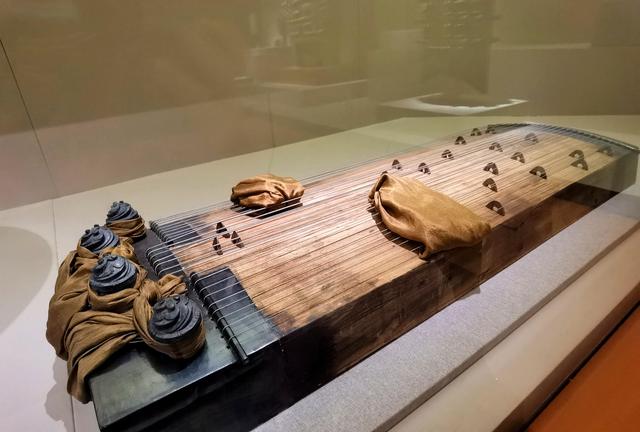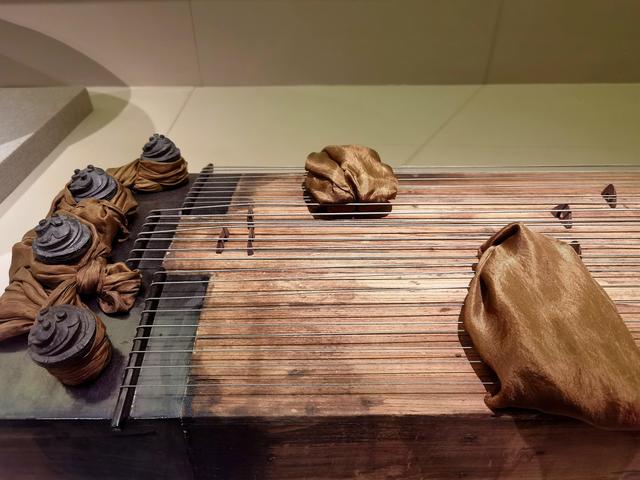The only complete serpent in the early Western Han Dynasty——Twenty-five stringed serpents in the Western Han Dynasty
Music comes from life and plays an extremely important role in promoting the development of civilization and improving spiritual and cultural life. In traditional Chinese culture, music is not only an organic part of traditional governance, but also an important part of literati cultivation. It has passed through the mighty torrents of history and fully witnessed the continuous development of Chinese culture. Among the ruins of early Chinese civilization, there are wind instruments represented by flutes and whistles, and percussion instruments represented by bells and drums.
From the pre-Qin Dynasty to the Han Dynasty, with the establishment and development of the ritual and music system, the musical instruments became more complicated, and large-scale musical instruments such as chimes and chimes appeared. , playing the piano and playing music has become an important part of the spiritual life of the literati.

The Hunan Provincial Museum collects a Western Han Dynasty black lacquer twenty-five-stringed sequin, which was unearthed in Mawangdui Tomb No. 1. Twenty-five strings, 116 cm long, 39.5 cm wide and 10.8 cm high. When unearthed, the 25 silk strings of Se were completely kept in their original positions, and the 25 arch bridge-type wooden columns also remained in their original positions. It is the only ancient ser tuning object discovered so far in archaeology, which provides valuable evidence for the study of ancient musical instruments.
More than 3,000 precious cultural relics have been unearthed from the three Han tombs in Mawangdui, which are rated as one of the ten rare treasures of the world's top ten ancient tombs, most of which are well preserved. Among them, there are more than 500 pieces of various lacquerware, which are exquisitely made, ornately decorated with new luster. The twenty-five black lacquer strings unearthed from Tomb No. 1 are the only complete ones in the early Western Han Dynasty.

The Western Han Dynasty Black Lacquer Twenty-Five Xian Se is a kind of lacquerware and stringed musical instrument in the Western Han Dynasty. Wooden, rectangular, originally wrapped with a thong, the parts are complete, and the column position is clear. The surface is arched and hollow, with a 1 cm thick bottom plate embedded under it. The head and tail are painted black, and the rest are light. Both ends of the bottom plate have a head over and a tail over. There is one Shouyue, with twenty-five string holes on the right; twenty-five silk strings are tied to the wooden truss, each string has a movable tuning column, and there are resonance windows at both ends of the bottom. The tail has three tail mountains, inner, middle and outer. There are nine string holes on the left side of the inner and outer mountains, and seven string holes on the left side of the middle tail mountain. At the end there are four wooden nades tied with strings, and the nadir ends are made of silver and decorated with swirls. The strings are made of four strands of plain silk left-handed. The strings on the Zhongyue are thicker, with a diameter decreasing from 1.9 mm to 1.2 mm, and the strings on the inner and outer mountains are thinner, with a diameter decreasing from 1.2 mm to 0.5 mm. There are arched wooden posts under each string. The method of tying the string is to tie a bow at the head of the string, and the tail of the string passes through the string hole from the first cross, leads through the surface of the serpent, stretches between the first and last mountains, then passes through the string hole of the tail mountain, enters the inside of the string body, and then folds to the left through the "passing string". Slot", go up through the wall at the end, fold it to the right and tighten it, and fasten it to the four sticking strings respectively.
There are two ways to play Se, one is to place Se in front of your knees and play with both hands. The second is to place one end of the serpent on the knee, and the other end on the ground. Se's voice is contagious and can express rich thoughts and feelings. Therefore, there is a story of Emperor Shun's southern tour and no return, and the emperor's concubine Xiang Ling wept in tears. This syllable is tuned in five tones, and it is also the most well-preserved among the dozens of ancient syllables unearthed in China. It provides very valuable material materials for the study of ancient music history and the performance methods of Han Dynasty musical instruments, which greatly enriches our understanding of the development of Han Dynasty music culture. level of understanding.
 渝公网安备 50010702504639号
渝公网安备 50010702504639号